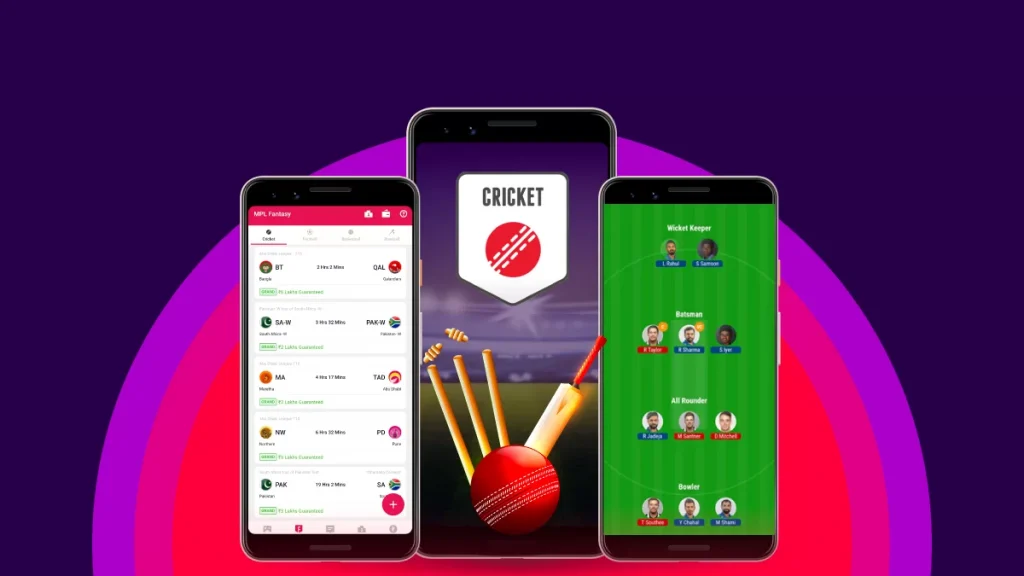Budget management is an important aspect of fantasy cricket sports that brings success to a team, be it Dream11, MPL, or any other platform. As a rule, a fantasy budget is fixed and does not change, and its management is what can turn a team’s chances of winning right or wrong. This article is focused on some key strategies for managing budgets in these fantasy leagues, which would balance and maximize the value of credits spent on player selection.

Strategies for Budget Management in Fantasy Leagues
Due to the limited number of credits available, it is essential to have a preference for select players, making it a challenging endeavor to identify those who will be beneficial in creating a successful team. This guide will go into detail about approaches to managing budgets in fantasy leagues, delving into intelligent credit allocation, finding value picks, knowing the format-specific roles of players, and monitoring performance.
1. Know Your Total Budget and Plan the Distribution
Before you make your picks, it helps to know how much credit you have in total and how to distribute it. Fantasy leagues usually preset a budget, say 100 credits, to form your team. The trick is to operate within that budget and still allocate credits judiciously for each function- batsmen, bowlers, all-rounders, and wicketkeepers; without overspending in any position category.
Tip: Spend about 60-70 percent of your budget on your top performers, leaving the rest for value picks.
2. Prioritize All-Rounders for Maximum Value
The all-rounder’s value is that he bats and bowls and is generally good for scoring in both innings, so it is almost worth the cost for his inclusion in the team. An all-rounder like Hardik Pandya or Moeen Ali contributes with the bat and the ball. Thus helping balance the point-scoring potential of your team.
Tip: Even if they cost much more, 1 to 2 high-performing all-rounders are often worth their weight backed into them.
3. Opt for Value Picks Over High-Priced Stars
Yes, even stars like Virat Kohli or Rohit Sharma can win matches on their day, but they slurp away most of the budget, leaving hardly any space to balance the rest of the team. Instead, look out for underrated players who are doing well currently but are available at cheaper rates. These picks add tremendous value without getting your team over budget.
Tip: Go for in-form players in the mid-priced range who would have a great chance of doing well but would not be picked up by most.
4. Focus on Players in Good Form
Form is one of the most important factors to consider when managing your budget. A player in great form is more likely to deliver consistent points, even if they aren’t among the biggest names. And a nonperforming player who is not in good form may only waste your money.
Tip: To have informed selections before the match, follow their performances, and check team news.
5. Choose Players Based on Match Format
Various formats necessitate distinct strategies. In T20 cricket, the presence of a strong batsman is essential, as is a bowler who can effectively take wickets during the powerplay overs. In ODIs, he or she must be more consistent.
Tip: For T20s, focus on top-order batters, death bowlers, and power hitters; for ODIs and Tests, pick consistent bowlers and all-rounders.
6. Take Advantage of Wicket-Keeper Value
Wicket-keepers can accumulate points for batting as well as fielding, thus making them essential for team formation; however, most premium options would be costlier. But the first-order batsmen give value for money.
Tip: Prioritize the wicket-keepers who open the batting or come in early, as they will get more chances of scoring.
7. Balance Star Players with Lower-Priced Options
Having a team filled with big stars sounds great, but it’s often not practical within the budget. Instead, balance your star players with lower-priced, high-value options. Another strategy that leaves room for maximum points without overspending is building a solid core of top-performing players and combining that with smart, low-value picks.
Tip: Keep 3-4 of the premium players and 5-6 mid-range players in form, who give good returns for their cost.
8. Track Player Price Fluctuations
Player prices can change rapidly based on their recent performances, popularity, and demand. It’s wise to monitor these fluctuations to grab players at a lower price before they rise in value. This way, you can get more players for your budget or make swaps to improve your team without exceeding the budget.
Tip: Buy early when a player’s price is low but their form is good, then monitor price changes for potential upgrades.
9. Manage Your Bench Wisely
Your bench players need to be carefully considered. These players are cheaper and will generally only come into play if a starter gets injured or doesn’t perform. However, they still need to be able to contribute. Pick lower-priced bench players who could come in as replacements or have the potential to surprise.
Tip: Use 2-3 cheaper players on the bench, but avoid completely inactive players who won’t play.
10. Follow Team Line-Ups and Last Minute Changes
Last-moment changes in the fantasy leagues due to injuries or squad rotation may make a difference in your final performance score. Always check the official line-ups before finalizing your team. A last-minute injury or selection change can leave you with underperforming players, so stay flexible and be ready to adjust your picks if necessary.
Tip: Make your final adjustments after the toss and team announcements to avoid selecting injured or dropped players.
The fantasy game has effective budget management; it is all about informed strategic decisions. Keep your focus on value picks, prioritize all-rounders, try to balance star players with budget-friendly choices, and keep updated on player form and match conditions. This way, you can build a high-scoring, well-balanced team. So, make use of the above tips to balance your team without overspending your budget, and the next step is to go on with winning the fantasy league.

